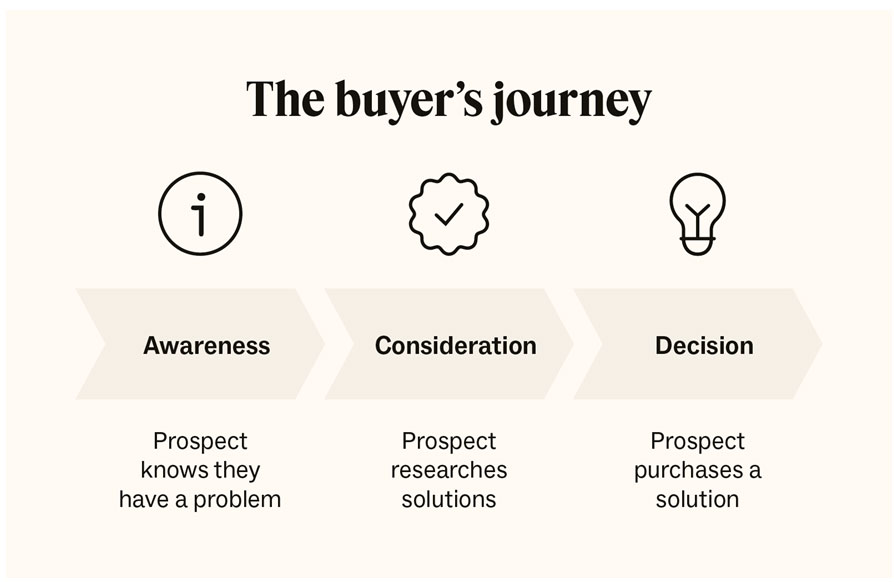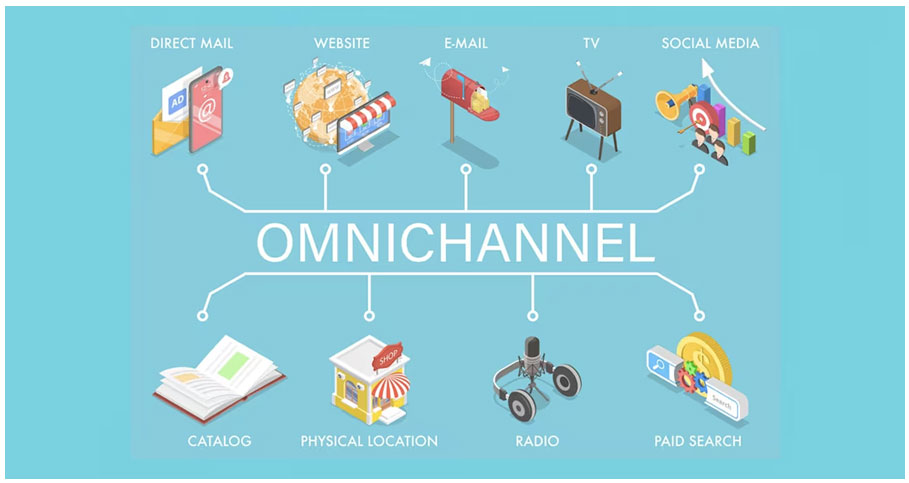Guest post by Eduard Klein. Crafting an impeccable B2B sales journey isn’t straightforward. Many sales reps struggle with it, as if stumbling in the dark. On one hand, there’s a sales quota you need to fulfill within a short...
Guest post by Eduard Klein.
Crafting an impeccable B2B sales journey isn’t straightforward. Many sales reps struggle with it, as if stumbling in the dark.
On one hand, there’s a sales quota you need to fulfill within a short span of time. On the other, there’s pressure to build positive, engaging relationships with prospects, without being pushy about lead generation.
Offering a stellar B2B sales experience comes with its own share of challenges in 2023. This post aims to help you understand and tackle those challenges.
As you delve deeper, you’ll uncover the challenges, the strategies, and the nuances that can transform your B2B interactions.
What is B2B Sales Experience?
B2B sales is, of course, the process of selling your products/services to other businesses. And B2B sales experience is the journey you create for your business buyer, from the initial touchpoint to the eventual sale.
Why does this matter so much?
Imagine you’re in a restaurant. Quick service might get you your food promptly, but it’s the ambiance, the attentive waiter, and the personalized touches that make you return.
Similarly, in B2B sales, it’s not just about providing a product or service. It’s the entire experience surrounding it, from making it easy to find important information to minimizing friction in the sales process.
And, of course, offering a great B2B sales experience helps you increase your profits by improving conversion rate, retention rates, and Customer Lifetime Value (CLV).
To truly excel in B2B sales, understanding and mastering this experience is crucial. It can make the difference between a one-time deal and a long-term partnership.
What are the Biggest Challenges in B2B Sales?
B2B sales comes with unique hurdles:
1. Lack of Personalization
A generic sales pitch is now a quick route to rejection. B2B buyers crave tailored experiences. Because if not you, there will be someone else offering them personalized experiences.
Customers want to feel understood, not to be just another name on a list. Personalizing your approach is crucial, but many B2B businesses struggle with offering a personalized sales experience.
For instance, many B2B decision-makers use Facebook for research and networking. By not tapping into the specialized Facebook B2B targeting tools, businesses might be missing out on reaching these professionals in a personalized manner.
2. Lack of Sales and Marketing Alignment
When sales and marketing teams operate in silos, it’s a recipe for inefficiency. Both teams aim to increase revenue, but different approaches can lead to conflicts.
Think about an IT services firm. The marketing team may generate leads with an enticing webinar, but if their sales reps aren’t briefed properly, they might approach prospects without context.
On the flip side, if the sales team doesn’t share feedback, marketing might be off-target with their campaigns. Without aligned goals and communication, opportunities slip away.
3. “Pushy” Sales Experience
According to a survey by HubSpot, buyers are looking for sales reps who listen to them and are not “pushy.”
No one likes to be pressured. Especially not seasoned business professionals. Yet, many B2B sales approaches involve high-pressure tactics.
How to Deliver a Great B2B Sales Experience
Now that you know how the B2B sales journey is riddled with some major challenges, here are nine tips that will help you overcome these obstacles:
1. Ruthlessly Filter Your Prospects
Obviously, not every lead is the same. That’s a hard truth in B2B sales. Knowing whom to target and whom to set aside is crucial.
Often, your website acts as the first point of interaction, shaping potential clients’ perceptions. By using efficient website builders, B2B businesses can create specific landing pages tailored for distinct segments of their target audience.
This not only delivers a tailored experience but also effectively filters prospects based on their interactions and interests on those pages.
Also, By leveraging efficient email marketing services, you can segment and nurture your leads more efficiently.
Moreover, using advanced lead scoring tools can help you prioritize prospects. These tools help you grade each lead, spotlighting those that are most likely to convert.
2. Analyze Your Sales Process
Analyzing your sales process is the first step to making it more efficient.
First, map out every step. From lead generation to closing deals, visually document each step. This visualization alone can highlight snags or redundancies. For instance, if you notice leads consistently drop off after a particular stage, it’s a sign. There might be a bottleneck.
Now, apply data analytics. For instance, some LinkedIn Premium plans provide valuable analytics that can be utilized to refine and optimize B2B sales strategies.
Additionally, tools like Salesforce and Hubspot make detailed metrics accessible. They show patterns, such which sales scripts get the most engagement or which email templates generate responses.
Next, consider feedback from the sales team. Maybe there is a certain tool that is cumbersome, or there’s a need for better product training.
Additionally, don’t forget to consider every touchpoint while looking for bottlenecks. For instance, do you know when your target audience is most active on Facebook? Scheduling Facebook posts at peak times ensures you’re reaching potential clients when they’re most receptive.
3. Know Which Stage Your Prospect is in
Identifying where your prospect stands is pivotal. It helps you be present for the buyer at the right time, with the right information that will help you guide them towards the sale.
Surveys or online quizzes can be excellent tools for lead qualification. By having prospects participate in these, you can not only engage them but also gain insight into their needs, level of expertise, or where they are in the buying journey.
From a fresh lead to a loyal client, each phase is distinct. Early on, buyers are curious. They’re exploring options, maybe looking at competitors. Tailoring your pitch here is about awareness. Highlighting unique selling points or sharing educational content is key.
As they move deeper, they seek details. Maybe they’re pondering how your solution fits their specific needs. Now, tailored demos or deep-dive webinars come into play. You can offer them a taste of the solution you provide.
While nearing the decision phase, they’re likely comparing finer points. Pricing structures, after-sales support, or even company reputation become focal. Address their last-minute concerns. Offer case studies that resonate or facilitate meetings with current satisfied clients.
Also, after determining the customer journey stage, having an appropriate call-to-action (CTA) is crucial. For instance, early-stage prospects might benefit from a CTA directing them to a whitepaper or webinar, while later-stage prospects might respond to a CTA scheduling a sales call or demo, or pointing them to an online ROI calculator.
4. Ask Questions and Listen to Your Prospects
As noted above, “listening to my needs” is the most important thing that buyers are looking for from sales professionals. So, asking the right questions and, more importantly, listening carefully to the answers can be a game changer.
Ever noticed how you trust someone more when they truly hear you out? It’s human nature. In the B2B realm, this trust translates to deals.
Start conversations by asking insightful questions, perhaps about their current challenges or future aspirations. It signals genuine interest. Using videos for lead generation can be a great way to do this.
Once they start sharing, don’t interrupt. Pay attention to every detail. When you actively listen to the prospects and let them know that you remember, the relationship strengthens.
Post-conversation, you can reflect on their input. Adjust your offerings or highlight features that address their specific concerns. If a prospect mentioned struggling with post-sale integration, show them how your solution simplifies that.
A well-informed sales proposal, backed by insights from your conversations, showcases that you’ve paid attention and truly care about their business needs. It becomes less about selling and more about providing solutions, elevating the trust factor.
5. Stop Being Pushy With Your Prospects
Every salesperson knows that persistence is key. But there’s a fine line between being persistent and pushy.
In B2B sales, patience is more than a virtue; it’s a necessity. Decision cycles are often long. So, hard-sell tactics won’t fly here. If you’re coming on too strong, you’re risking more than just the sale. You’re jeopardizing future partnerships and tarnishing your brand’s reputation.
Consider this: A B2B purchase typically has much more at stake than a B2C one. Companies are making decisions that affect their operations, bottom lines, and team dynamics. They need to trust you. If they feel pressured, that trust erodes.
Instead of strong-arming, focus on understanding. Dive into their pain points. Offer solutions, not just products. Remember, your goal is to build a long-term relationship, not just make a one-off sale.
Retargeting prospects can be a subtle way to remind your prospects of your offerings without being intrusive. It’s like a gentle nudge, telling them, “Hey, we’re still here when you’re ready.” This way, you stay top of mind, but on their terms.
6. Offer an Omnichannel Sales Experience
Today, buyers interact with brands across multiple platforms daily. It’s far more than just email or phone calls.
For instance, a B2B buyer might start out as a lead from Facebook, move to LinkedIn, check out your webinar, and end up on a Zoom call. Their journey isn’t linear; it’s spread across channels. And you need to be present at every touchpoint.
But being everywhere online isn’t enough. The experience needs to be seamless. If a prospect watches a webinar, your sales rep should know before their next call. If they raised concerns on an email, it should be addressed on the follow-up LinkedIn message.
Such coordination makes your brand appear attentive and integrated. It shows you care about every interaction. Salesforce reported that 84% of customers say the experience a company provides is as important as its products, and that includes the sales experience.
7. Connect Your Prospects With Your Customers
Your prospects want reassurance. They seek validation that your product or service delivers as promised. And who better to confirm this than your existing customers?
Peer reviews hold immense power. According to Gartner, more than 66% of B2B buyers rely on peer reviews and testimonials during their decision-making process. These testimonials act as social proof, reducing the perceived risk of choosing your brand.
But don’t just stop at written testimonials. Consider arranging a meeting between a loyal customer and a prospect. This direct interaction can address specific concerns and give an insider’s view of your offerings.
8. Frequently Ask For Feedback and Improve
Actively seeking feedback from your clients can unveil hidden pitfalls in your sales process.
With the aid of outreach tools, you can automate feedback collection post-sales interactions. These tools can send periodic surveys or questionnaires, ensuring you’re always in the loop about your client’s experiences.
Tools like SurveyMonkey or Typeform can help collect valuable insights. Don’t just gather feedback after a sale. Engage at different stages. This provides a comprehensive view of the entire sales journey.
Moreover, embrace negative feedback. It’s gold. Instead of getting defensive, view it as an opportunity—an opportunity to refine, evolve, and better serve your clients in the future.
Acting on feedback, making necessary changes, and continually iterating your approach is not just good business, it’s essential for delivering a standout B2B sales experience.
9. Set KPIs and Track the Performance of Your Sales Process
Key Performance Indicators (KPIs) guide you throughout this process. They show if you’re on the right path or need course correction.
Every B2B sales process should have clear, defined KPIs. For instance, “Sales Conversion Rate” offers insights into how many leads are becoming paying clients.
“Customer Lifetime Value” (CLV) is another crucial KPI. It reveals how valuable a client is over the long run. High CLV indicates a potent sales strategy.
You can also set KPIs specific to tactics you have employed. For instance, if you have added a chatbot to your website, one of your KPIs could be the number of leads generated through chat. Tracking response times, customer satisfaction rates post-chat, and the conversion ratio can offer insights into how effective it is as a sales tool.
Conclusion
B2B sales isn’t just about closing a deal; it’s about forging a partnership. And offering a premium sales experience is key to standing out from the sea of competitors and improving your B2B business’ revenue.
The tips and insights provided in this brief guide will help you dig deeper into your current sales process with a fresh set of eyes, and also help you make necessary changes to ensure the highest possible efficiency.
 Eduard Klein is an International Digital Growth Marketer, Blogger, and Entrepreneur with a global mindset. He is the founder of RocketGrowth and guides through the process of starting and growing a digital business, and riding the wave of digital technology and marketing without getting swept away.
Eduard Klein is an International Digital Growth Marketer, Blogger, and Entrepreneur with a global mindset. He is the founder of RocketGrowth and guides through the process of starting and growing a digital business, and riding the wave of digital technology and marketing without getting swept away.
The post How to Deliver a Great B2B Sales Experience appeared first on B2B Marketing Blog | Webbiquity.



















